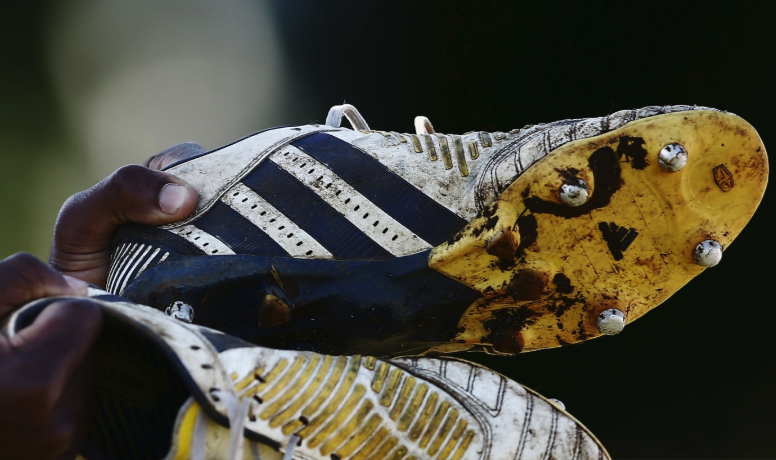Rugby’s beauty is in its low reliance on technological innovation to be truly great, writes RYAN VREDE.
Road running made me appreciate rugby even more recently. Allow me to explain.
I followed the scandal involving running shoes designed with thick-foamed and springy soles containing a full-length carbon fibre plate that gives runners a greater energy return than any running shoe on the market.
Prototypes of the Zoom Vaporfly 4% and ZoomX Vaporfly Next% models were used by a clutch of elite athletes, including Kenyan Brigid Kosgei, who broke Paula Radcliffe’s marathon world record in 2019. Her countryman Eliud Kipchoge ran an unofficial sub-two-hour marathon in Vienna the previous day in shoes designed especially for the occasion.
The competitive edge is not imagined. Scientific studies found Zoom Vaporfly 4% and ZoomX Vaporfly Next% wearers were 2-5% faster than runners in any other shoes being worn.
When records started tumbling competitor brand threw fits, as did many elite marathon runners who weren’t kitted out in either of the models that give you wings. The international athletics governing body, World Athletics, intervened, investigated and ultimately banned certain models of the shoe. Competitor brands were already in the process of creating their own versions of this shoe (goose, gander, you see) but had to halt production.
I’m a strong advocate for innovations that improve sports, so I didn’t understand the fuss about these shoes. Just because you didn’t think of it (insert sportswear brand here) doesn’t give you the right to call for its banning. When a running shoe company straps rockets on to one of their models, sure, cry out in disgust. But to demonise innovation of this ilk, and in the process stunt the progression of the sport, is just, well, dumb.
This all got me thinking about what type of technical innovations would make rugby players better. I’m happy to report, nothing will. Well, not by a margin that would demand the intervention of World Rugby.
Rugby has gone through a period where boots, balls and uniforms became lighter and more breathable. Players wear second-skin type underwear to improve circulation and counter lactic acid buildup. We’ve experimented with grippy gloves but those were cast aside in favour of good ol’ fashioned skin and motor skills.
*Follow us on our new Instagram journey by clicking here
Footwear is the area of the game with the most potential for innovation, but even then players aren’t in line to gain Vaporfly-level advantages over their opponents. In late January, Adidas released the Predator football boot boasting ‘Demonskin’ – an upper featuring 406 tiny spikes which they claim (as supported by the testimony of pro footballers) promote greater ball control, ball feel and improved curl when striking the ball.
I could see how a similar innovation could aid goal-kickers and those players who kick tactically. I even accept that boots may get lighter when NASA mines a new fabric from space and sportswear companies use it in product development. Yet even then, gains won’t come close to what Nike has done with the running shoes in question.
And herein lies rugby’s beauty. Any edge gained legally is one earned by the individual through disciplined nutrition, consistency in adherence to a tailored conditioning programme, mental preparation and the exhibition of high levels of temperament when the pressure is cranked up, and an astute understanding of and ability to execute their tactical assignment.
In future, coaches may be gifted with analysis software that aids their causes. But all elite coaches will have access to that (unless it is developed in-house, in which case, salute to the innovators). So for the most part, rugby matches are going to continue to be won by coaches who are able to extract the best from the players available to them.
Conditioning science will develop, helping coaches grow bigger, stronger and faster versions of the beasts that play the game. Again, if a conditioning coach is able to gain an advantage through legal innovation, kudos to him or her. But it is more likely that the science that underpins any significant shift in conditioning methods or nutrition will be readily available to all elite coaches in rugby’s conditioning community.
Rugby will continue to be a game where any legal advantage gained will rest in how determined the player and coach is to achieve that edge. Never underestimate the beauty of that in a sporting context.
Photo: Getty Images





